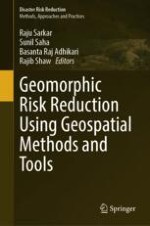2024 | OriginalPaper | Buchkapitel
12. An Evaluation of Hydrological Modeling Using CN Method and Satellite Images in Ungauged Barsa River Basin of Pasakha, Bhutan
verfasst von : Leki Dorji, Raju Sarkar
Erschienen in: Geomorphic Risk Reduction Using Geospatial Methods and Tools
Verlag: Springer Nature Singapore
Aktivieren Sie unsere intelligente Suche, um passende Fachinhalte oder Patente zu finden.
Wählen Sie Textabschnitte aus um mit Künstlicher Intelligenz passenden Patente zu finden. powered by
Markieren Sie Textabschnitte, um KI-gestützt weitere passende Inhalte zu finden. powered by
